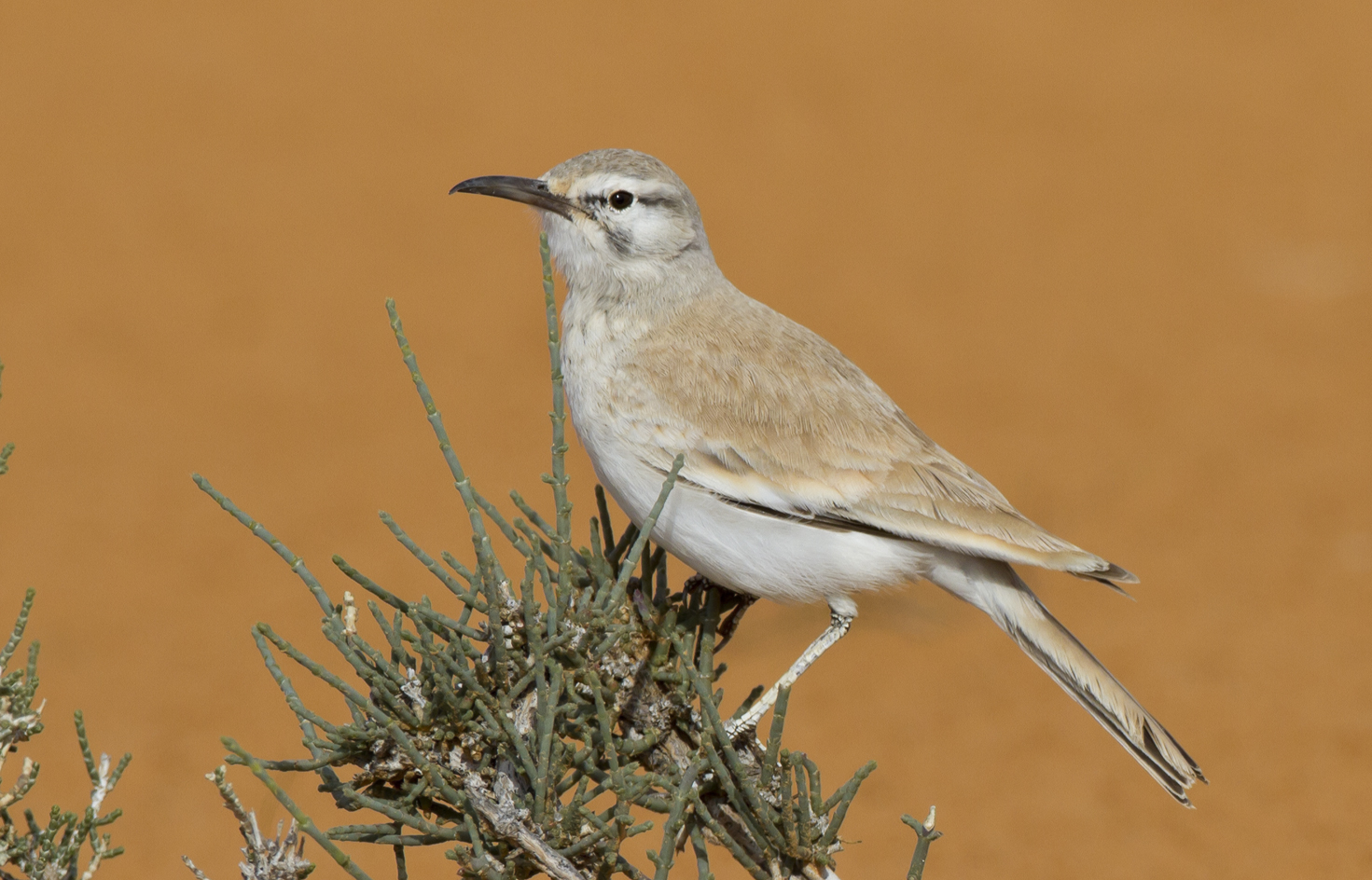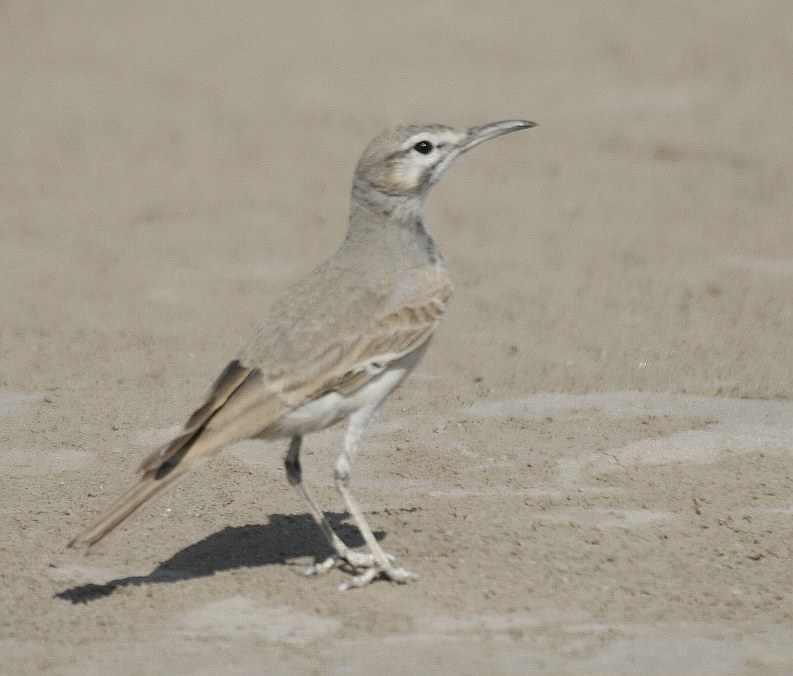
Alaemon alaudipes
TAXONOMY
Upupa alaudipes Desfontaines, 1789, between Gafsa and
Tozzer, Tunisia.
OTHER COMMON NAMES
English: Hoopoe lark, bifasciated lark; French: Sirli du dйsert;
German: Wьstenlдuferlerche; Spanish: Alondra Ibis.
PHYSICAL CHARACTERISTICS
7.1–7.9 in (18–20 cm); male 1.4–1.8 oz (39–51 g); female
1.1–1.6 oz (30–47 g); one of the largest lark species, females
smaller than males. Bill very long, slender, and slightly decurved.
Plumage sand-colored above, underside white, throat
and breast with dark spots, similar in both sexes. Wings long
and broad with conspicuous black-and-white pattern, comparable
to that of African subspecies of hoopoe (Upupa epops). This
lark was first described as a hoopoe, and its original scientific
name means “hoopoe with legs of a lark.”
DISTRIBUTION
Cape Verde Islands, North Africa from Mauritania to Egypt
and Sudan, across the Middle East to northwestern India.
HABITAT
Semideserts and deserts.
BEHAVIOR
Tame and confiding, allowing humans to approach to within a
few feet. Male defends territory against conspecific intruders
and other birds by wing-spread
BEHAVIOR
. Usually solitary or in
pairs. Song ringing and far-carrying. For song-flight, male
jumps up from perch and starts to sing, ascending almost vertically
up to 33 ft (10 m) and performs somersaults, displaying
its contrasting pattern on tail and wings. It then closes its
wings, nose-dives back to perch, not opening its wings until
landing. Song-flights can be repeated frequently within up to
one hour.
FEEDING ECOLOGY AND DIET
Mainly arthropods and snails. Most food items obtained by
digging with bill. Female bill is 30% shorter than bill of male,
so sexes probably exploit different food resources. Two methods
for cracking snail shells: snails dropped onto stone in flight
or smashed against stones directly until shells break.
REPRODUCTIVE BIOLOGY
Monogamous. Only lark species building nests frequently on
top of low shrubs, up to 24 in (60 cm) above ground. Also
building cup-shaped nests on ground. Two to four eggs incubated
by female for about 14 days. Both parents feed young,
which leave nest after 12–13 days, before being able to fly.
Young remain for at least one month with parents.
CONSERVATION STATUS
Not threatened.
SIGNIFICANCE TO HUMANS
None known.
Other popular Animals
Photo Gallery of - Greater hoopoe-lark




 Animalia Life
Animalia Life